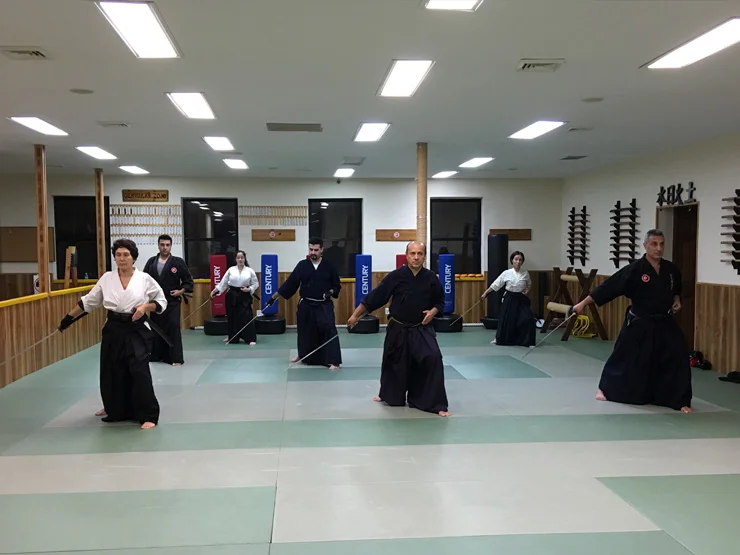
When it comes to Japanese martial arts, Aikido and Karate are two distinct disciplines that have gained recognition and popularity worldwide. While both Aikido and Karate share roots in Japan and promote physical fitness, self-defense, and personal growth, they differ significantly in their philosophies, techniques, and training methodologies. In this article, we delve into the contrasting characteristics of Aikido and Karate, shedding light on their unique approaches and benefits.
Origins and Philosophies:
Aikido:
Aikido, developed by Morihei Ueshiba in the early 20th century, is often referred to as the “art of peace.” Its philosophy revolves around the principle of harmony and non-resistance. Aikido practitioners seek to blend with and redirect the energy of an opponent rather than meeting force with force. The goal is to neutralize attacks using joint locks, throws, and immobilization techniques without causing harm. Aikido emphasizes the concept of “ki” (energy) and promotes a balanced and harmonious approach to conflict resolution.
Karate:
Karate, on the other hand, has a longer history dating back centuries. It originated in Okinawa and was influenced by Chinese martial arts. Karate focuses on self-defense and combat techniques using strikes, kicks, knee strikes, and punches. Its philosophy emphasizes discipline, respect, and self-improvement. Karate practitioners aim to deliver powerful and precise blows, utilizing techniques that involve speed, strength, and proper body mechanics. While self-defense is a core aspect of Karate, some modern styles also embrace competitive sport karate.
Techniques and Training Methods:
Aikido:
Aikido techniques involve circular and flowing movements that redirect an opponent’s force. Practitioners learn to blend with and control the attacker’s energy, using joint locks, throws, and immobilization techniques. Aikido training emphasizes proper body alignment, balance, and timing. Techniques are practiced in a cooperative manner, with partners taking turns as the attacker and defender. This cooperative training allows practitioners to refine their techniques and develop sensitivity to the opponent’s movements.
Karate:
Karate techniques consist of strikes, kicks, knee strikes, and punches aimed at delivering powerful blows. Training in Karate involves practicing specific forms or “katas,” which are prearranged sequences of movements that simulate combat situations. Karate training also includes sparring sessions, where practitioners engage in controlled fights to apply their techniques in a more dynamic and realistic setting. This form of training builds speed, agility, and the ability to react quickly in self-defense situations.
Mindset and Focus:
Aikido:
Aikido places a strong emphasis on maintaining a calm and focused mind. Practitioners strive to achieve a state of “mushin,” or “no-mind,” where they are free from fear, anger, and preconceived notions. The goal is to respond to an attack with fluidity and adaptability, relying on instinct and intuition rather than conscious thought. Aikido training aims to develop mental clarity, mindfulness, and the ability to remain centered and composed in stressful situations.
Karate:
In Karate, mental focus and discipline are paramount. Practitioners cultivate a mindset of determination, perseverance, and self-control. The training instills a strong work ethic and the ability to push through physical and mental barriers. Karate practitioners learn to harness their mental strength to execute techniques with precision and power. The practice of kata requires concentration and attention to detail, enhancing mental discipline and focus.
Application and Self-Defense:
Aikido:
Aikido techniques are primarily designed for self-defense, focusing on neutralizing and redirecting an opponent’s energy rather than inflicting harm. Aikido techniques can be effective in real-life situations, especially against larger or stronger attackers. Aikido practitioners learn to control and subdue their opponents using joint locks, throws, and immobilization techniques, often without causing injury. The emphasis is on redirecting and deescalating confrontations rather than engaging in physical confrontations.
Karate:
Karate, with its strikes and kicks, emphasizes self-defense through powerful and efficient techniques. Karate practitioners train to deliver precise and forceful blows to vulnerable targets on an attacker’s body. The focus is on incapacitating the opponent quickly and decisively. Karate techniques are designed for practical self-defense situations and can be effective in close-quarter combat. Competitive sport karate also offers opportunities to test one’s skills in a controlled environment.
Conclusion:
Aikido and Karate represent two distinct paths within the world of Japanese martial arts. While Aikido emphasizes harmony, redirection of energy, and non-resistance, Karate focuses on self-defense through powerful strikes, kicks, and punches. Aikido training promotes circular and flowing movements, joint locks, and throws, while Karate training emphasizes precise strikes, body mechanics, and kata forms. Both disciplines offer unique benefits, including physical fitness, self-defense skills, mental discipline, and personal growth. Choosing between Aikido and Karate depends on an individual’s personal goals, philosophies, and preferences. Whichever path one chooses, both Aikido and Karate offer profound opportunities for physical and mental development, as well as a deeper understanding of Japanese martial arts and culture.
